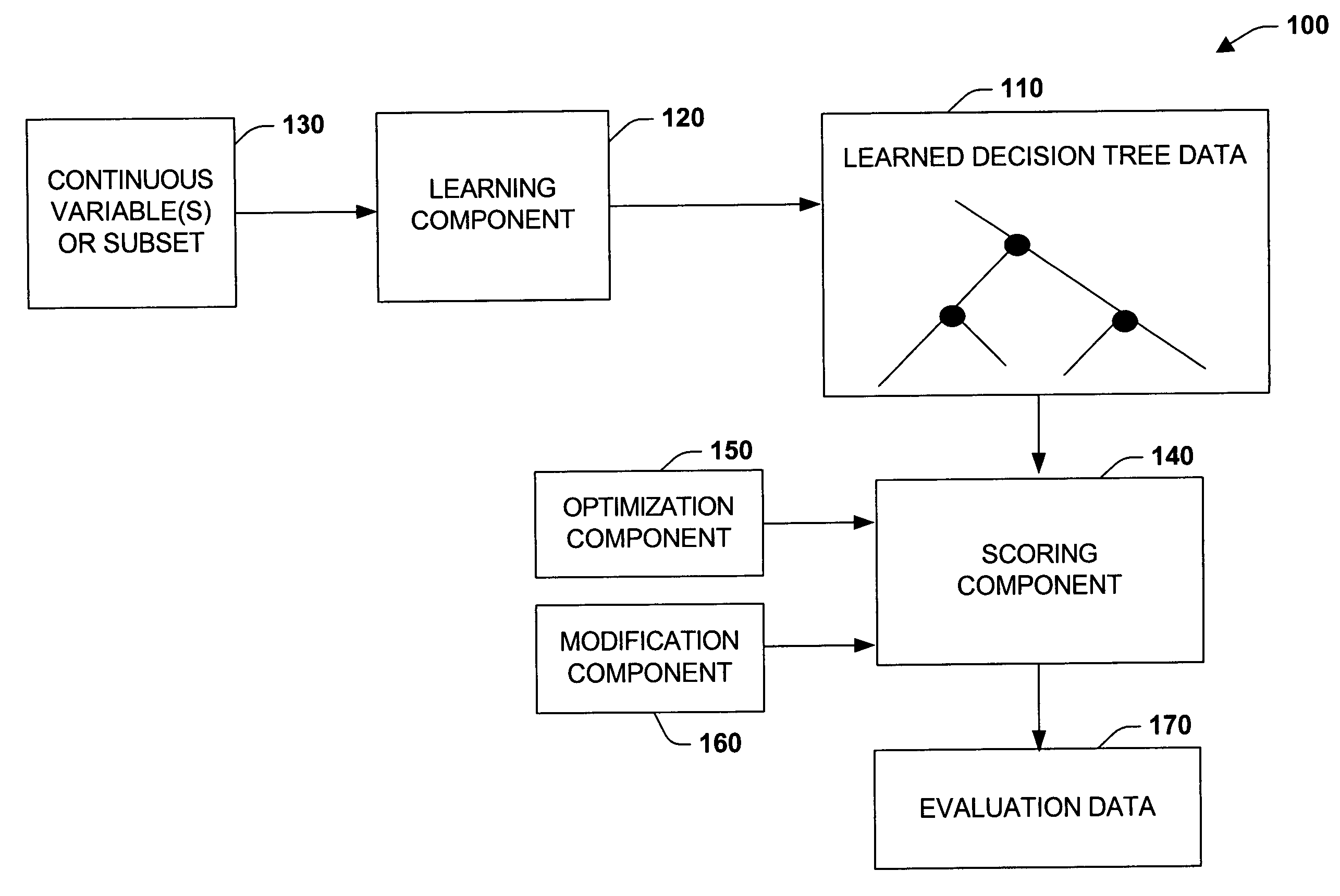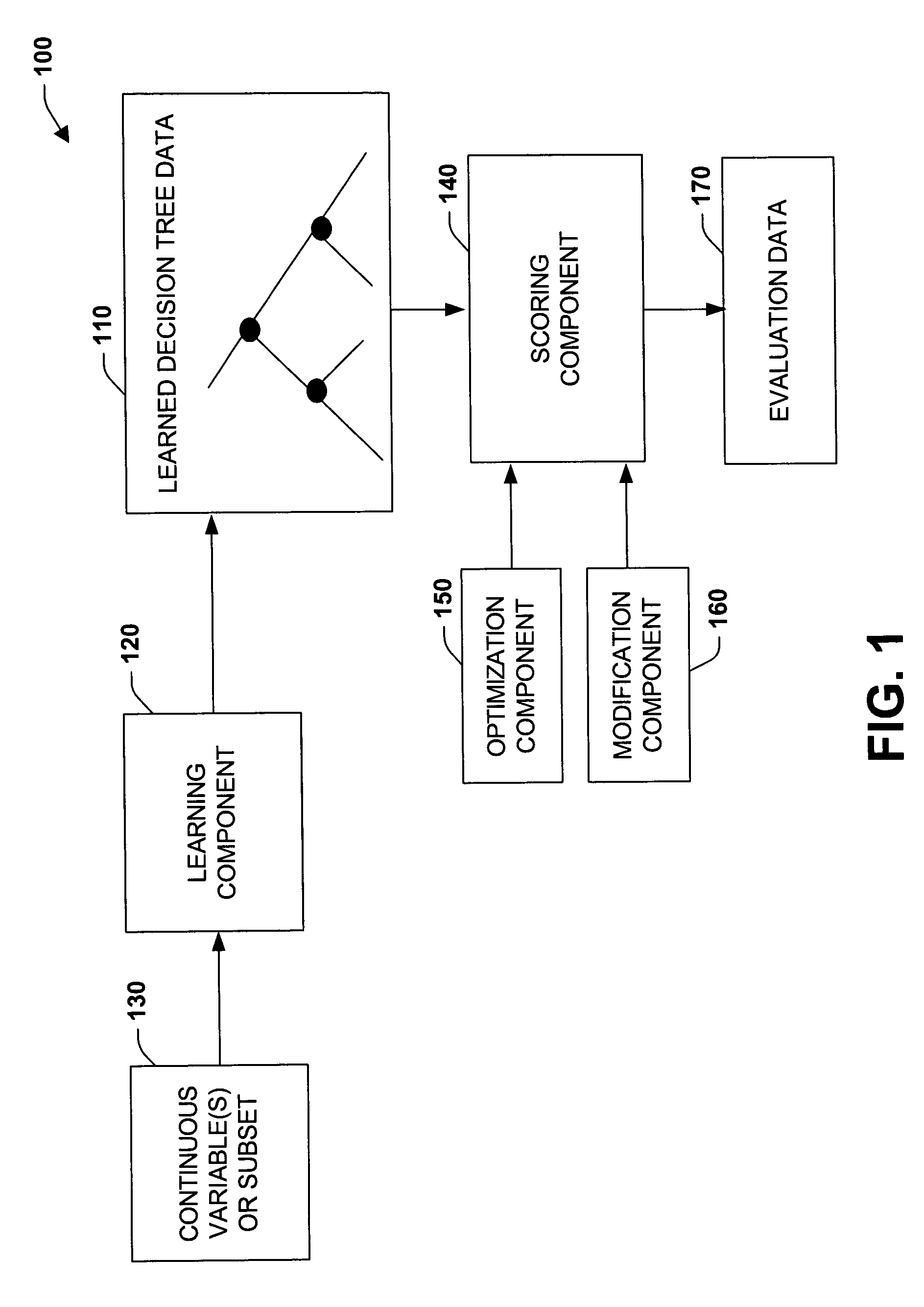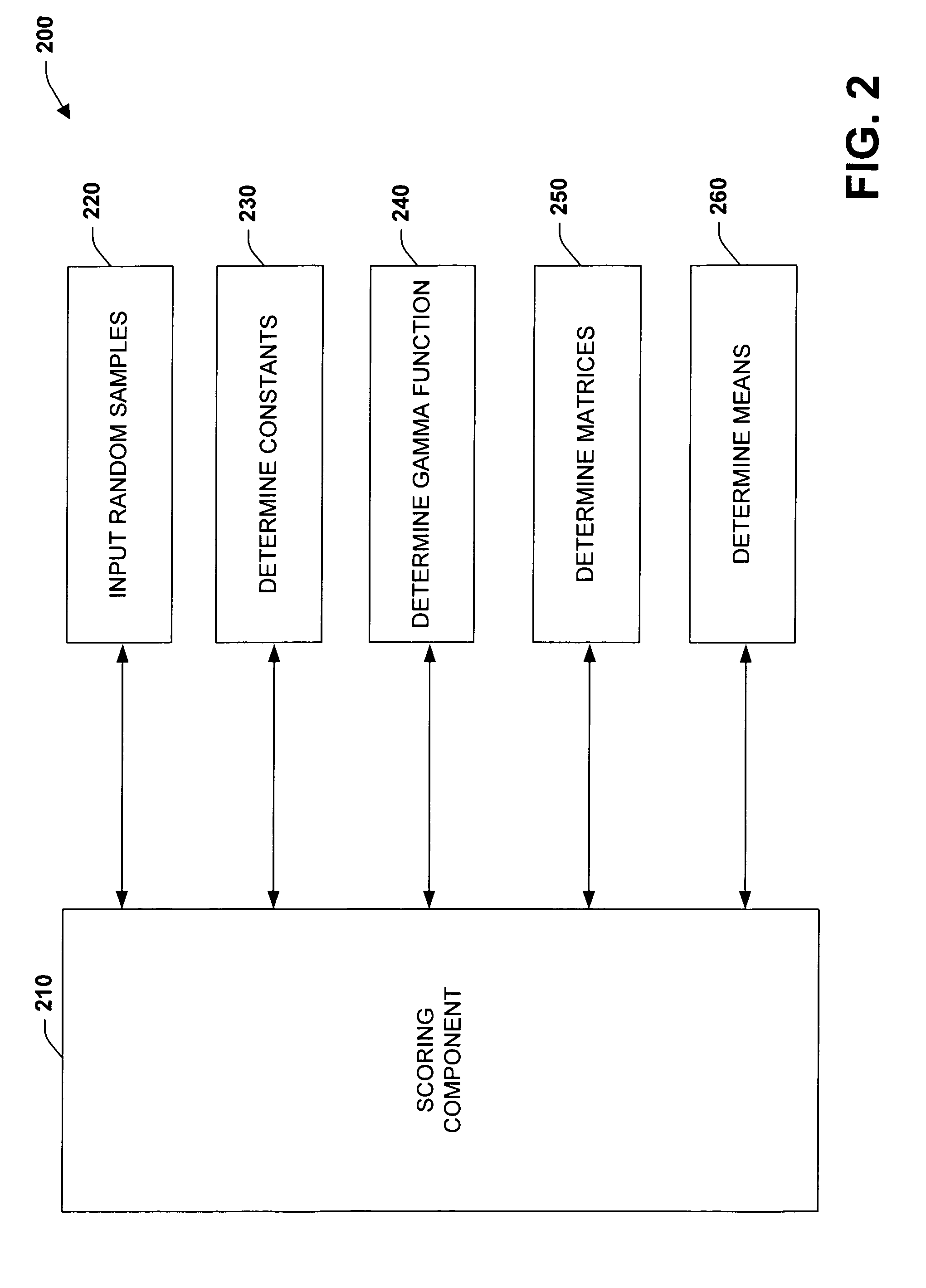Dynamic standardization for scoring linear regressions in decision trees
a linear regression and decision tree technology, applied in adaptive control, process and machine control, instruments, etc., can solve the problems of enormous runtime performance reduction, difficult to anticipate what a useful set of priors is, and the burden of system performance on standardizing operations
- Summary
- Abstract
- Description
- Claims
- Application Information
AI Technical Summary
Benefits of technology
Problems solved by technology
Method used
Image
Examples
Embodiment Construction
[0030]The present invention relates to a system and method to facilitate data mining applications and automated evaluation of models for continuous variable data. In one aspect, a system is provided that facilitates decision tree learning. The system includes a learning component that generates non-standardized data that relates to a split in a decision tree and a scoring component that scores the split as if the non-standardized data at a subset of leaves of the decision tree had been shifted and / or scaled. In this manner, computer-processing operations can be mitigated which enhances performance of associated algorithms for evaluating the decision tree. A modification component can also be provided for a respective candidate split score on the decision tree, wherein the above data or data subset can be modified by shifting and / or scaling the data and a new score is computed on the modified data. Furthermore, an optimization component can be provided that analyzes the data and dete...
PUM
 Login to View More
Login to View More Abstract
Description
Claims
Application Information
 Login to View More
Login to View More - R&D
- Intellectual Property
- Life Sciences
- Materials
- Tech Scout
- Unparalleled Data Quality
- Higher Quality Content
- 60% Fewer Hallucinations
Browse by: Latest US Patents, China's latest patents, Technical Efficacy Thesaurus, Application Domain, Technology Topic, Popular Technical Reports.
© 2025 PatSnap. All rights reserved.Legal|Privacy policy|Modern Slavery Act Transparency Statement|Sitemap|About US| Contact US: help@patsnap.com



